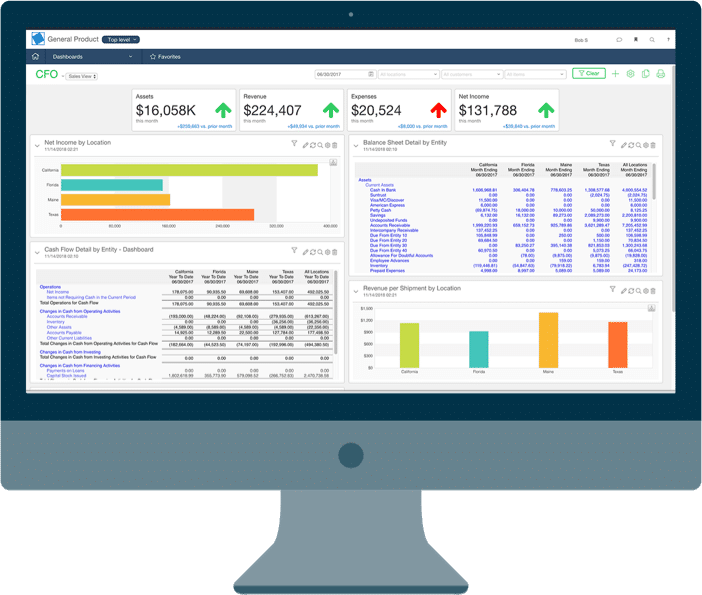What is fixed asset depreciation?
Fixed asset depreciation is a universally accepted accounting technique utilized to incrementally transfer the cost of fixed assets from balance sheet accounts (asset) to profit & loss accounts (expense) over their useful lifespan or until such a time as they are no longer in service and assisting revenue creation for the organization (disposed or written off).
Fixed Asset: A fixed asset in an organization is purchased for long-term use and are not likely to be converted quickly into cash. Usually it is property, plant & equipment (PPE) owned or controlled, which is expected to contribute to the organization’s ability to generate revenue and/or future benefits. These assets are recorded on a company’s balance sheet and can be acquired or created. The future benefits of an asset may include increased cash flow, reduced expenses, or improved sales.
Useful life (aka effective life): The term “useful life” is an estimate of the number of years an asset is expected to remain in productive service. The useful life is usually directly linked to fixed asset depreciation, as it determines the number of years over which the asset’s value can be gradually reduced. Factors such as usage patterns and the age of the asset at the time of purchase can influence the estimation of useful life. Every jurisdiction’s tax/revenue department may differently determine and mandate the useful life of assets.
Depreciation meaning represents the portion of an asset’s value that has been consumed or utilized. By depreciating an asset, an organization can spread out the cost of ownership over a specific period while still generating revenue from it.
This approach significantly reduces the immediate financial burden of owning an asset in the first year.
Failing to account for depreciation could have a substantial impact on a company’s profits.
Assets can be depreciated for both tax and accounting purposes.
AssetAccountant fixed asset software reports tax depreciation for all jurisdictions around the world, as well as keeping a separate account of book depreciation following either the IFRS or US GAPP accounting standard.
How to calculate depreciation?
There are many approved fixed asset depreciation methods for both tax and accounting fixed asset depreciation.
1. Straight line (also known as Prime Cost) depreciation method. This is the simplest and most commonly used method. It allocates the cost of the asset evenly over its useful life. The formula for straight-line depreciation is:
Annual Depreciation Expense = (Cost of Asset − Residual Value) ÷ Useful Life
2. Double-Declining Balance (also known as Diminishing Balance) depreciation method: This method accelerates depreciation, allocating more of the asset’s cost to the earlier years of its useful life. The formula for double-declining balance depreciation is:
Annual Depreciation Expense = 2 × (1 ÷ Useful life) x Book Value at Beginning of Year
3. Units of Use (also known as Units of Production) depreciation method: This method allocates the depreciation expense based on the actual usage of the asset. It’s particularly useful for assets like machinery or vehicles whose productivity can be measured. The formula for units of production depreciation is:
Annual Depreciation Expense = ((Cost of Asset − Residual Value) ÷ Total Units of Production) x Units produced in the period
AssetAccountant – saving you from spreadsheets since 2019
4. MACRS depreciation method: The Modified Accelerated Cost Recovery System (MACRS) depreciation method is the depreciation system used by the IRS for tax purposes in the United States. It allows the capitalized cost of an asset to be recovered in a specified period through annual deductions. Fixed assets are categorized into different classes, each of which has its own depreciation period.
The selection of the depreciation method is contingent upon various factors, including the characteristics of the asset and its projected usage pattern.
It also depends if you need to calculate depreciation for tax, accounts or both.
For tax depreciation: There are different depreciation rules and depreciation methods for each tax jurisdiction (e.g. IRS (USA), ATO (Australia), CRA (Canada), IRD (NZ), etc.)
For accounting depreciation: There are two broadly accepted international accounting standards. IFRS (International Financial Reporting Standards) or US GAAP (United States Generally Accepted Accounting Principles).


Depreciation calculator
AssetAccountant is fixed asset software that automates fixed asset depreciation and lease accounting. It is an automatic depreciation calculator engine that also posts journals to the General Ledger.
It combines detailed interpretation of Tax and Accounting rules with a modern user interface design, making it easy to create and maintain a fixed asset register.
We take depreciation and leasing seriously
We undertake detailed modelling of fixed asset depreciation and lease calculation rules for both accounting and tax.
We monitor changes to ATO tax rulings and accounting standards like IAS 16 and IFRS 16 so you don’t have to.
And, of course, we are ISO27001 certified.
Why our clients love AssetAccountant


Fantastic product - has literally saved me hours of work.


Ever wanted the big company fixed asset system without all the clunkiness and overthinking on the part of the software developers (I'm looking at you Thomson Reuters...)? Well then you need AssetAccountant. It provides just the right mix of complex depreciation calculations and beautiful user interface. It's a system designed by accountants and executed perfectly by developers. The integration is seamless with Xero (you can sign into AA with Xero credentials which is awesome if you are already running Xero on your browser) and journaling synchs are very flexible between the two applications. Then there is the price. I challenge you to find a more robust fixed asset system at these price points. Well done AssetAccountant.
You get me.
I now have my big boy jocks back on for fixed asset management....and they fit!











Ready to kick some assets?
- AssetAccountant is fixed asset software that automates fixed asset depreciation & lease accounting and posts their journals to the General Ledger.
- AssetAccountant combines detailed interpretation of Tax and Accounting rules with a modern user interface design, to simplify the process of creating and maintaining your fixed asset register.
- AssetAccountant is sophisticated enough for Wall Street, user-friendly enough for main street.
- AssetAccountant is for worldwide application 🌎













































